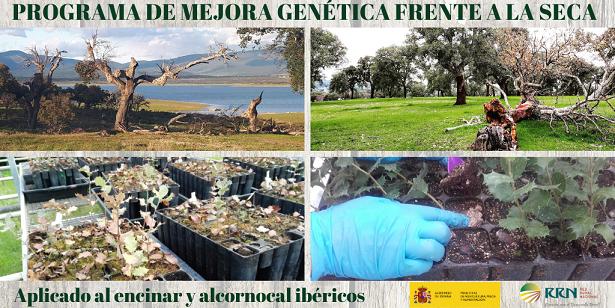
20 de March de 2020
Cambio climático y gestión de recursos naturales
March 12, 2020. The Ministry of Agriculture, Fisheries, and Food has launched a national program for the conservation and genetic improvement of holm oaks and cork oaks to combat La Seca syndrome. The goal is to obtain specimens tolerant to rot caused by the fungus Phytophthora cinnamomi.
The Quercus drought is a decline syndrome affecting holm oaks and cork oaks that is causing high mortality rates in numerous affected areas of the Iberian Peninsula, especially in the southwest. This syndrome cannot be attributed to a single cause, although its main cause is root rot caused by the presence of the fungus Phytophthora cinnamomi in the soil. The "Quercus drought" can currently be considered the main threat to holm oak and cork oak forests, as it compromises the stability and persistence of ecosystems as important in the Mediterranean as the dehesas.
For all these reasons, the Ministry of Agriculture, Fisheries and Food has launched a national program for the conservation and genetic improvement of holm oaks and cork oaks to combat La Seca syndrome. The ultimate goal is to obtain rot-tolerant specimens that can then be used to regenerate trees in pastures and cork oak forests, as well as to restore affected areas.
How is genetic improvement carried out?
By collecting acorns from specimens that have survived in the field and growing plants in nurseries that are inoculated with the fungus so that, alternating periods of flooding and drought, their tolerance to the disease can be assessed for two consecutive years.
The surviving specimens are considered tolerant to varying degrees, and the aim is, on the one hand, to establish seed orchards for the production of acorns that will generate tolerant plants with high genetic diversity in the future, and, on the other, to clone the best specimens through vegetative multiplication, especially through in vitro cultivation techniques, to use these plants in more specific or more productive situations.
In addition to these activities, other complementary actions will be carried out to advance our understanding of this disease:
- Analysis of the biological component of the soil in drought hotspots.
- Collection of various plant materials for the study of molecular markers that allow for the identification of genes or proteins that express disease tolerance, thus enabling faster evaluation and advancement of genetic improvement.
For the implementation of this long-term program, an investment of €2,299,976.95 is available for the first four years, with 75% co-financing from the EAFRD. These activities are included in the 2014-2020 National Rural Development Program, within submeasure 15.2, which supports the promotion and conservation of forest genetic resources.









